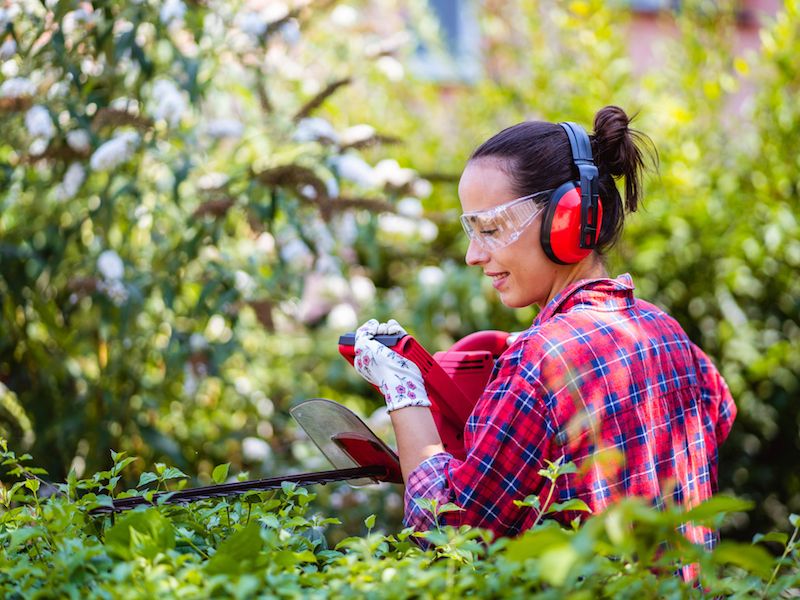
Safeguarding your hearing is a lot like eating the right way. It’s hard to know where to begin even though it sounds like a good idea. This is especially true if you don’t consider your daily environment to be especially noisy and there aren’t any noticeable dangers to your ears. But day-to-day life can put stress on your ears and your senses, so practicing these hearing protection techniques can help safeguard your auditory acuity.
If you want to continue to enjoy the sounds around you, you need to do everything you can to slow down the deterioration of your hearing.
Tip 1: Wearable Ear Protection
Using ear protection is the most practical and basic way to safeguard your hearing. This means taking basic steps to reduce the amount of loud and damaging noises you’re subjected to.
This means that when it’s called for most people will want to wear ear protection. Hearing protection normally comes in two basic forms:
- Ear Muffs, which are put over the ears.
- Ear Plugs, which are placed in the ear canal.
Neither form of hearing protection is inherently better than the other. Each style has its benefits. What’s important is that you get some hearing protection that you feel comfortable with.
Tip 2: Know When Sound Becomes Dangerous
But how do you know when to wear hearing protection? Noise that is painful is commonly regarded as harmful. But much lower levels of sound can harm your ears than you might believe. The sounds of traffic, for example, are loud enough to start injuring your hearing after just a couple of hours. An essential step in protecting your hearing, then, is recognizing when sound becomes dangerous.
The following threshold is when sound becomes dangerous:
- 85 decibels (dB): This volume of sound is hazardous after about two hours of exposure. This is the volume of sound you’d expect from a busy city street or your hairdryer.
- Over 100 dB: Your ears can be very rapidly injured by this. Injury is done in around thirty seconds with sounds over this threshold. For example, rock concerts and jet engines will injure your hearing in 30 seconds.
- 95-100 dB: This is the normal level of your earbuds or the level of farm equipment. After around 15-20 minutes this volume of noise becomes hazardous.
Tip 3: Make Your Phone Into a Sound Meter
Now that we have a general concept of what volume of sound might be harmful, we can take some steps to ensure we minimize our exposure. The trick is that, once you’re out and about in the real world, it can be difficult to determine what’s loud and what isn’t.
That’s where your smartphone can become a handy little tool. There are dozens of apps for iPhone, Android, and everything in between that turn your device’s microphone into a sound meter.
In order to get an idea of what hazardous levels of noise really sound like, use your sound meter to check the decibel level of everything you are hearing.
Tip 4: Keep Track of Your Volume Settings
A smartphone with earbuds is commonly the way people listen to music these days. This sets up a risky situation for your hearing. Your hearing can be significantly damaged if you set your earbuds to high over a long period of time.
That’s why safeguarding your hearing means keeping a sharp eye on your volume control. You should not increase the volume in order to drown out sounds somewhere else. in order to make sure that volume doesn’t get too loud, we recommend using volume configurations or app settings.
If your hearing begins to wane, earbuds can become a negative feedback loop; in order to compensate for your declining hearing, you may find yourself constantly increasing the volume of your earbuds, doing more harm to your ears in the process.
Tip 5: Have Your Hearing Examined
You may think that having a hearing exam is something you do only when your hearing starts to decline. The problem is that it’s not always easy to identify a problem in your hearing without a baseline to compare results to.
Generating data that can be used for both diagnostic purposes and for treatment can be best achieved by scheduling a hearing test and screening. This will give you some extra perspective for future hearing decisions and ear protection.
Pay Attention to Your Hearing
It would be ideal if you could constantly safeguard your ears without any difficulty. But challenges are will always be there. So whenever you can and as often as possible, safeguard your hearing. You should also have your hearing tested regularly. Use these suggestions to improve your chances.
